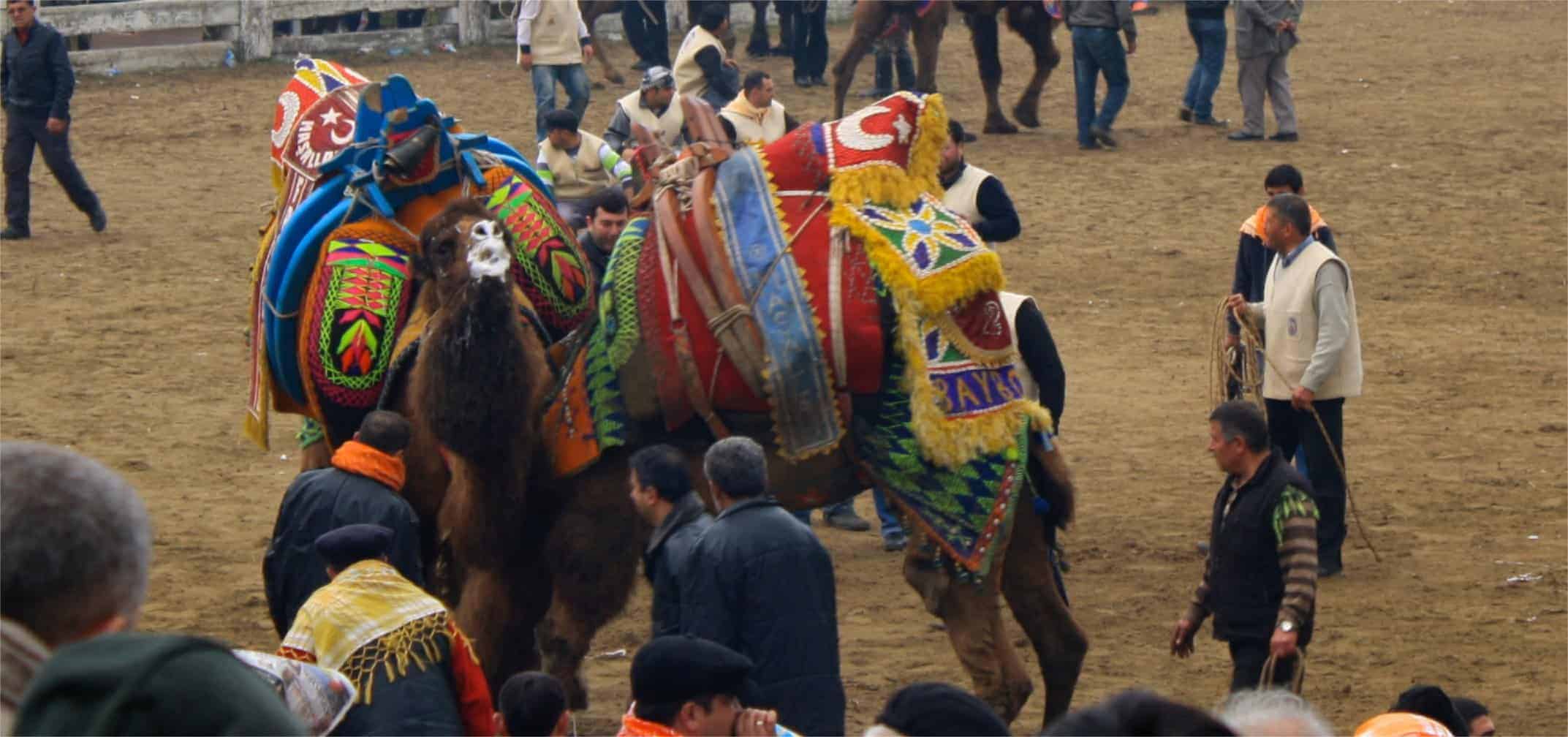
Camel wrestling is, in a word, raucous. Smoke permeates every inch of the earthen amphitheater, so much so that it is difficult to make out the large banner of Ataturk standing atop the highest bank, gazing over the festivities. There is the constant sound of multiple music peddlers, each pair roving around with a drum and a clarinet in hand. Bottles of rakı don’t stay full for long and a grill full of meat is the centerpiece of each cluster.
Yet what really makes the scene are the legions of men, many of them dressed in quite similar clothing. After seeing what I counted to be the thirtieth pair of accordion boots, I turned to my neighbor and asked where I might be able to get a pair. He laughed at my question, at my desire for his boots, and asked if I, by chance, had a father who was an efe. The answer was clear – I was out of luck.
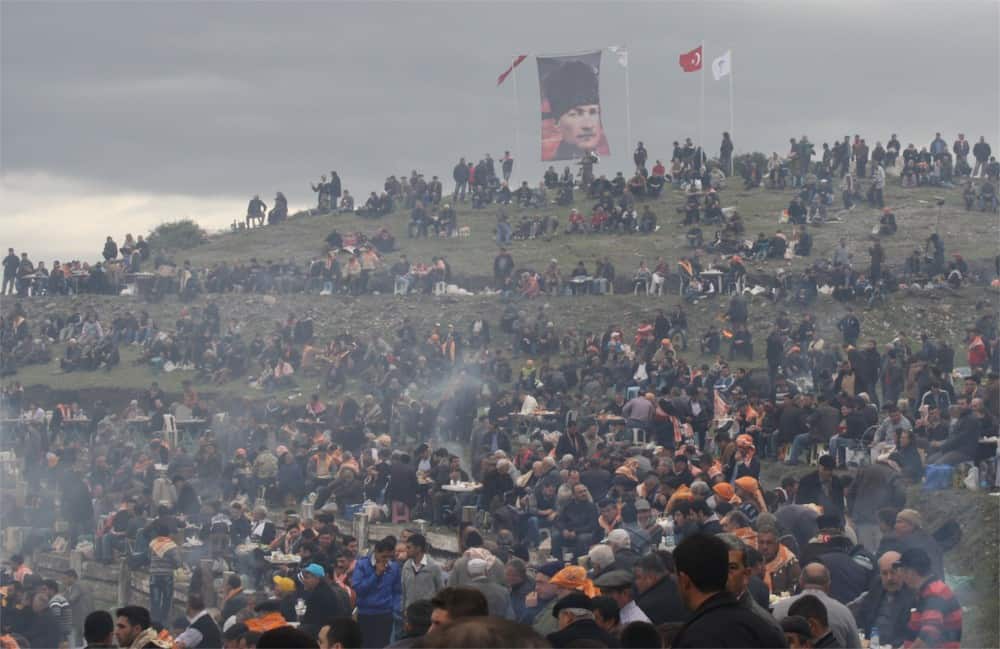
The penny dropped. The reason why this gathering felt so chummy, so much like a boys’ club was not just because it was a group of men gathering on a Sunday to enjoy some adult beverages under the guise of watching sports – a familiar trope to say the least. It was also due to the fact that a large number of these men identify with, or at least feel some connection to, the label efe.
Efe is most broadly used as a generic name for a brave and honest man, making it easy to understand why it’s such a popular name in Turkey. On a more specific level, the term efe describes a particular type of man from western Anatolia, mainly the Aegean region. According to Turkish folklore this man was a bandit of sorts, who was forced to the mountains after committing an act that, despite being considered honorable by his community, was punishable by the authorities. An efe is often cast as a historical Robin Hood-type figure, an outlaw who was sustained by the money he stole from the rich and the support he received from the sympathetic locals.
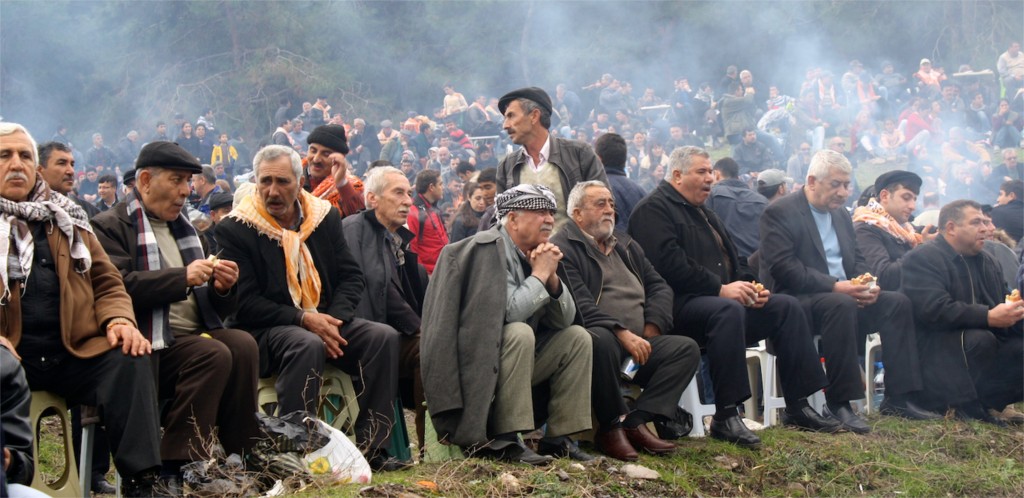
When attempting to peer behind the platitudes, it becomes difficult to discern what counts as the historical record and what can be classed as folklore. In the late Ottoman and early Republican era, efe was the title given to the leader of a zeybek group, which consisted of irregular soldiers and guerrillas. It is believed that the Ottoman authorities at times issued a general amnesty or allowed certain efe to return to society. Although these groups were infamous for defying authority, they did play a significant role in the Turkish War of Independence, thwarting the Greek troops that had invaded western Anatolia through the port of Izmir in 1919.
Yet this factual information comes in large part from the stories told about various individual efe. One such bandit, Çakırcalı Mehmet Efe, has been celebrated and lauded in film and literature. So what do we know about him? Active in western Anatolia in the late nineteenth and early twentieth centuries, Çakırcalı Mehmet took to the mountains after killing the Ottoman officer who had murdered his father, also an efe. Surprisingly, he eventually agreed to an offer of amnesty and was subsequently co-opted by the local government, which offered him a substantial salary to hunt down other efe active in the mountains. However, there are numerous stories about his adventures and sources consistently point out how he remained (and remains) a revered and beloved character. So much so that a 1958 film, Dokuz Dağın Efesi: Çakıcı Geliyor, was made of his life, and Yaşar Kemal wrote a heroic epic detailing his exploits titled Çakırcalı Efe; these are only a few of the many ways he is memorialized.
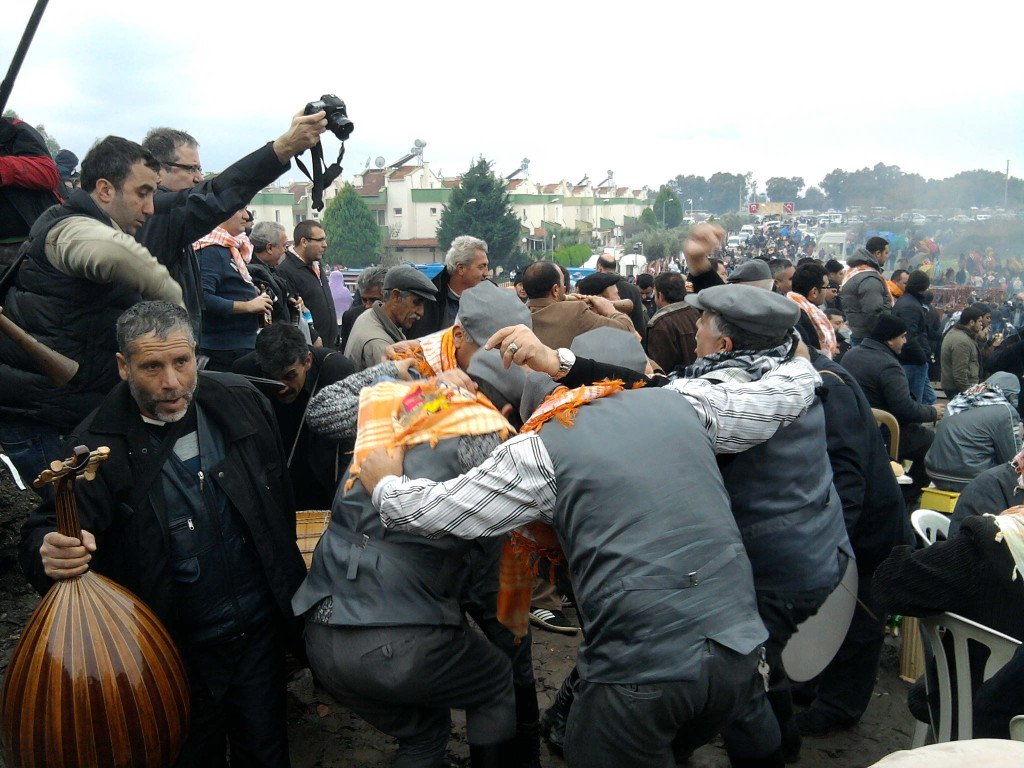
While historians have also attempted to provide an account of Çakırcalı Mehmet’s life, it becomes clear that their work has been influenced and shaped by folklore. As such, it is difficult to separate history and folklore, to examine what we know about the efe and what is embellished and exaggerated in an attempt to create a heroic archetype. Maybe, though, that is not the point. Of course, it is necessary to recognize how history and folklore can be conflated when it comes to identity politics, especially in relation to nationalism. But even if we can pinpoint the ways a concept is not always rooted in reality, it does not change the fact that it has become a reality for certain groups.
And in that way the legions of men dressed in strikingly similar three-piece suits, dancing the way that they learned from their fathers and uncles, and wearing those boots passed down through the generations, spoke to me of their efe heritage. Although the promise of watching camels wrestle is enough of a draw to make the trek to Selçuk in January, these men and their efe culture are what will make your day.
Emma Harper is a contributor for Yabangee










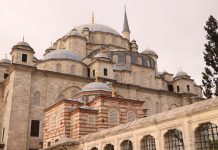
Great article. Would love to make it one year.
[…] gift – plan a weekend trip to Edirne or head down to Selcuk to watch the camel wrestling – there are always those times when you have to buy an honest-to-goodness gift (Secret Santa, […]
[…] that different from life in other big cities. This familiarity may be why certain events, like the camel wrestling festivals that take place each winter in western Turkey or the oil wrestling festival held in […]
[…] Hang with the efes while watching camels wrestle or freeze your ass of while watching crazy humans snow wrestle; hit the ski slopes in Uludağ or […]
[…] Turkish name that more generally connotes a brave and honest man, is also a term used to describe a particular type of man from western Anatolia. According to folklore, these men threw off the yoke of oppressive authority and took to the […]
[…] For a slightly more scholarly look at the role of the Efe in camel-wrestling, read Emma Harper’s article in Yabangee. […]